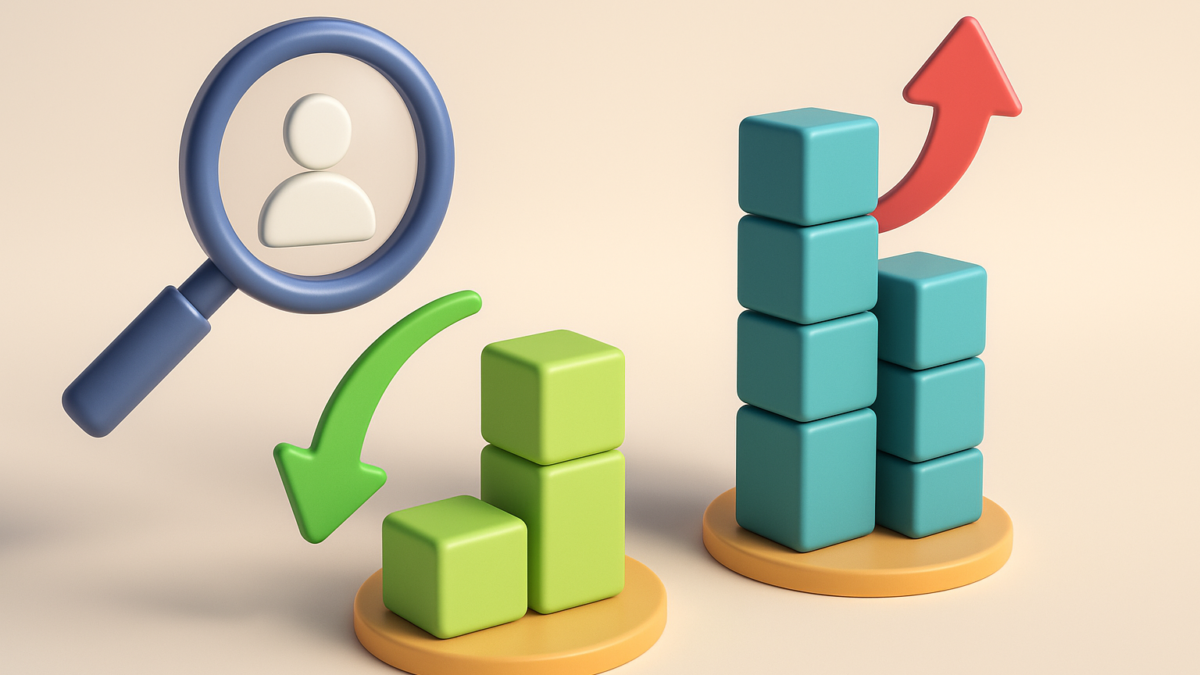B2B Lead Generation in 2025: Why Quality Beats Quantity Every Time
Why Quality Leads Outperform Quantity in 2025
For years, B2B marketers have measured success by the number of leads they captured. More leads meant more opportunities, right? Not anymore. In 2025, businesses have learned that lead quantity doesn’t equal lead quality. A database of thousands of unqualified contacts drains time, resources, and budgets without driving real revenue.
The future of B2B lead generation is shifting to quality-first strategies—focusing on intent, relevance, and conversion potential. Let’s dive into why this change is happening, how businesses can adapt, and what tools and strategies deliver the best results.
Why Quantity No Longer Works

In traditional B2B marketing, the race was to fill the pipeline with as many leads as possible. But several challenges made this model unsustainable:
- Low Conversion Rates: High-volume lists often produce leads with little to no intent to buy.
- Wasted Sales Efforts: Sales teams spend too much time chasing unqualified contacts.
- Damaged Brand Reputation: Poor targeting and irrelevant outreach reduce trust.
- Increased Costs: Paying for bulk lead generation campaigns without measurable ROI.
In today’s competitive environment, businesses need fewer but higher-quality leads that actually progress through the sales funnel.
Why Quality Beats Quantity in 2025
1. Buyer Intent is the New Currency
Marketers now rely on intent data—signals that show a prospect’s readiness to buy, such as content downloads, product comparisons, or repeat website visits. Leads with intent outperform cold contacts by 3x in conversion rates.
2. Personalized Engagement Builds Trust
Quality leads allow businesses to personalize outreach. Instead of blasting generic campaigns, marketers can tailor messages to industry pain points, decision-making roles, and buying stages. Personalization increases the likelihood of conversion by 80%.
3. Sales Teams Operate More Efficiently
With higher-quality leads, sales teams can focus on prospects most likely to close. This improves productivity, shortens sales cycles, and aligns marketing and sales more effectively.
4. Long-Term Customer Value
High-quality leads are more likely to convert into loyal customers, creating recurring revenue and lifetime value (LTV). In B2B, the goal isn’t just a sale—it’s a relationship.
Strategies for Quality-First Lead Generation
1. Account-Based Marketing (ABM)
Instead of casting a wide net, ABM targets specific high-value accounts. In 2025, AI-powered ABM platforms allow hyper-personalization, delivering content directly relevant to decision-makers in target organizations.
2. Whitepapers & Content Syndication
Whitepapers remain one of the most powerful tools for educating and attracting qualified leads. By syndicating whitepapers across trusted platforms, businesses reach the right audience actively seeking insights.
3. Intent Data & Predictive Analytics
AI tools now analyze online behavior patterns—such as competitor research or keyword activity—to identify prospects showing buying intent. Predictive analytics ensures marketing efforts target the right time and place.
4. Multi-Channel Engagement
A quality-first strategy uses multiple touchpoints to nurture leads:
- Email campaigns personalized by role and industry.
- LinkedIn outreach for direct engagement with decision-makers.
- Retargeting ads to re-engage interested prospects.
- Webinars & virtual events to showcase thought leadership.
5. Lead Scoring & Qualification
AI-driven lead scoring models rank prospects based on behavior, demographics, and engagement. This ensures that only sales-ready leads reach your team, saving time and resources.
The Role of AI in B2B Lead Generation
AI is the backbone of quality-first strategies in 2025. It enables:
- Automated lead enrichment with accurate firmographic data.
- Predictive lead scoring to prioritize the best opportunities.
- Conversational AI chatbots to qualify leads 24/7.
- Smart campaign optimization for maximum ROI.
Businesses leveraging AI-driven lead gen strategies report up to 40% higher conversion rates compared to traditional methods.
Measuring Lead Quality in 2025
Success in modern lead generation isn’t about form fills—it’s about impact. Metrics that matter include:
- Conversion Rate (lead to opportunity).
- Sales Velocity (time taken from lead to close).
- Customer Lifetime Value (CLV).
- Pipeline Contribution (revenue influenced by leads).
By measuring these metrics, businesses can prove the true ROI of their lead generation investments.
Real-World Example
A SaaS company targeting enterprise clients reduced its lead volume by 50% but doubled conversions by shifting to quality-first strategies. Using ABM and intent data, they focused only on Fortune 500 accounts, resulting in shorter sales cycles and multi-year contracts.
Conclusion
In 2025, B2B lead generation is no longer a numbers game. Quality beats quantity every time because real growth depends on high-intent, well-targeted leads that convert into long-term customers.
Businesses that embrace this shift—from chasing leads to nurturing the right ones—will build stronger pipelines, increase ROI, and achieve sustainable success.
Call to Action
Ready to transform your lead generation strategy? At iTMunch, we bring you expert insights, trends, and strategies to help you focus on the leads that matter most. Stay ahead in the world of quality-first B2B lead generation.





